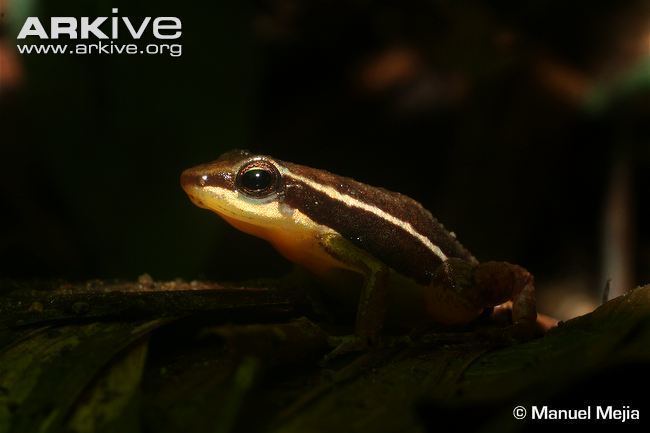Order Anura Higher classification Colostethus | Phylum Chordata Family Dendrobatidae Scientific name Colostethus machalilla Rank Species | |
 | ||
Similar Frog, Poison dart frog, Amphibians, Colostethus, Marbled poison frog | ||
Epipedobates machalilla, formerly Colostethus machalilla, is a slender species of frog in the family Dendrobatidae. Endemic to West Ecuador, it lives in dry and low forests and was first described by Luis A. Coloma in 1995. With a decreasing population, IUCN have classed it as Near Threatened.
Contents
Description
Epipedobates machalilla has a snout-vent length of 14.4 to 16 millimetres (0.57 to 0.63 in) for males and 15.0 to 17.6 millimetres (0.59 to 0.69 in) for females. Their heads are longer than they are wide, and the tympanum is small. The forelimbs have a moderate length and the fingers are unwebbed. The toes do not have lateral fringes and the terminal discs are expanded. It is dark-coffee in colour with a gold iris and cream ventral surfaces.
Biology
The mating system of the Epipedobates machalilla includes cephalic amplexus. The female will produce around 15 eggs which are left on the ground or under leaves. The female will then leave, and the male will protect the development of the embryos and carry the larvae. When the tadpoles hatch (around 20 days after fertilization occurs), the male will take the tadpoles to riverbanks or pools of water so metamorphosis and growth can take place.
Distribution
Epipedobates machalilla is endemic to West Ecuador, where it lives in dry and low forests. It mainly occurs in Azogues, Bolívar, El Oro, Guayas, Los Rios and Manabí and has been seen in the Choco rainforest. The species occurs at altitudes between 10 and 515 metres (33 and 1,690 ft). Recently, the population has been declining due to agriculture and logging, which has caused IUCN to class the species as Near Threatened.
